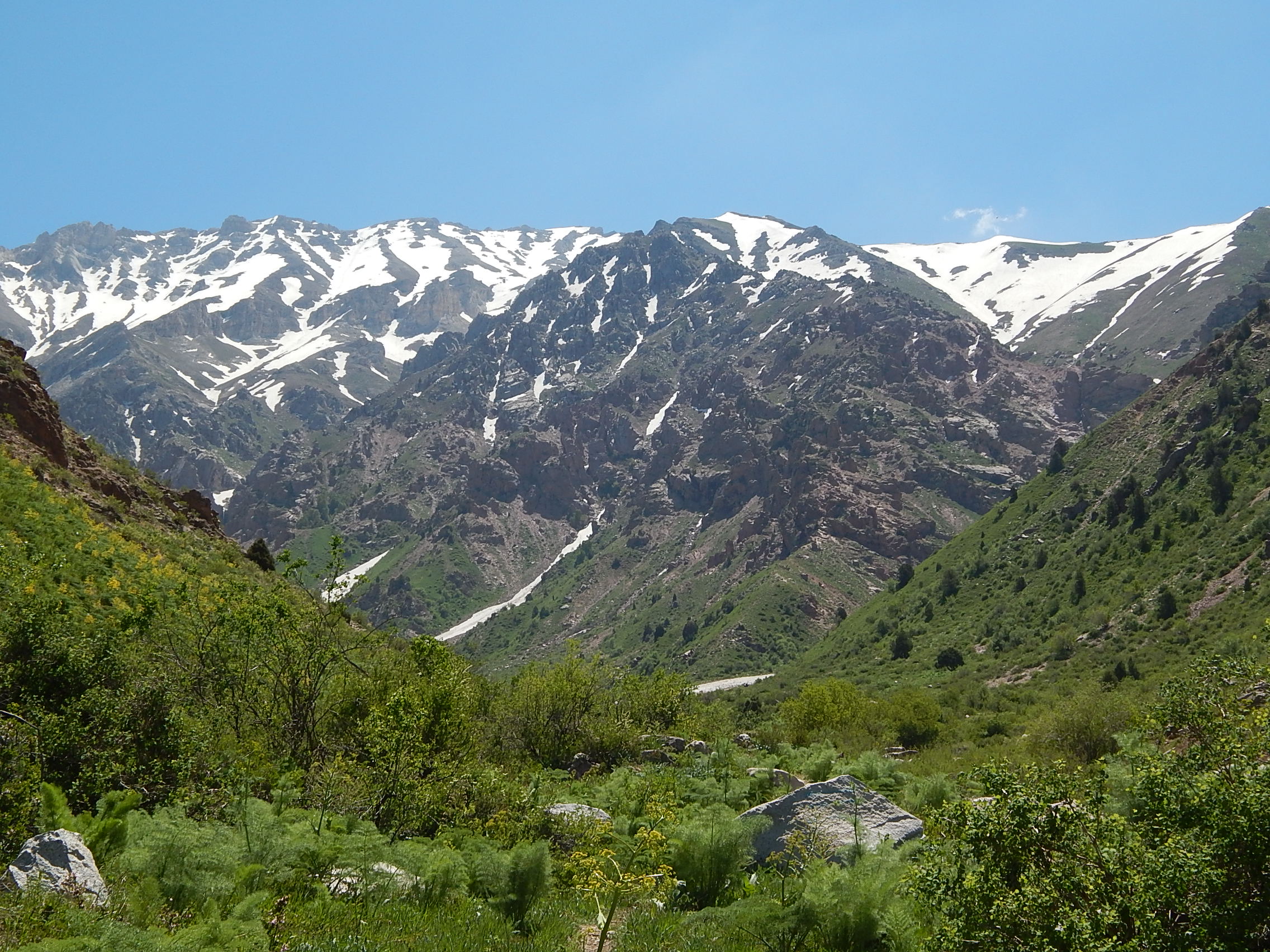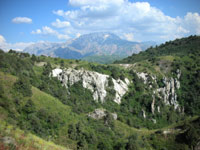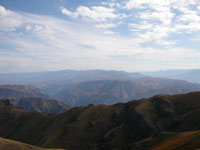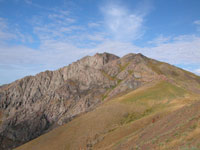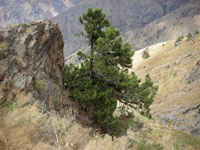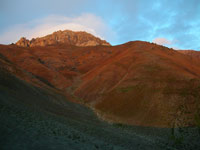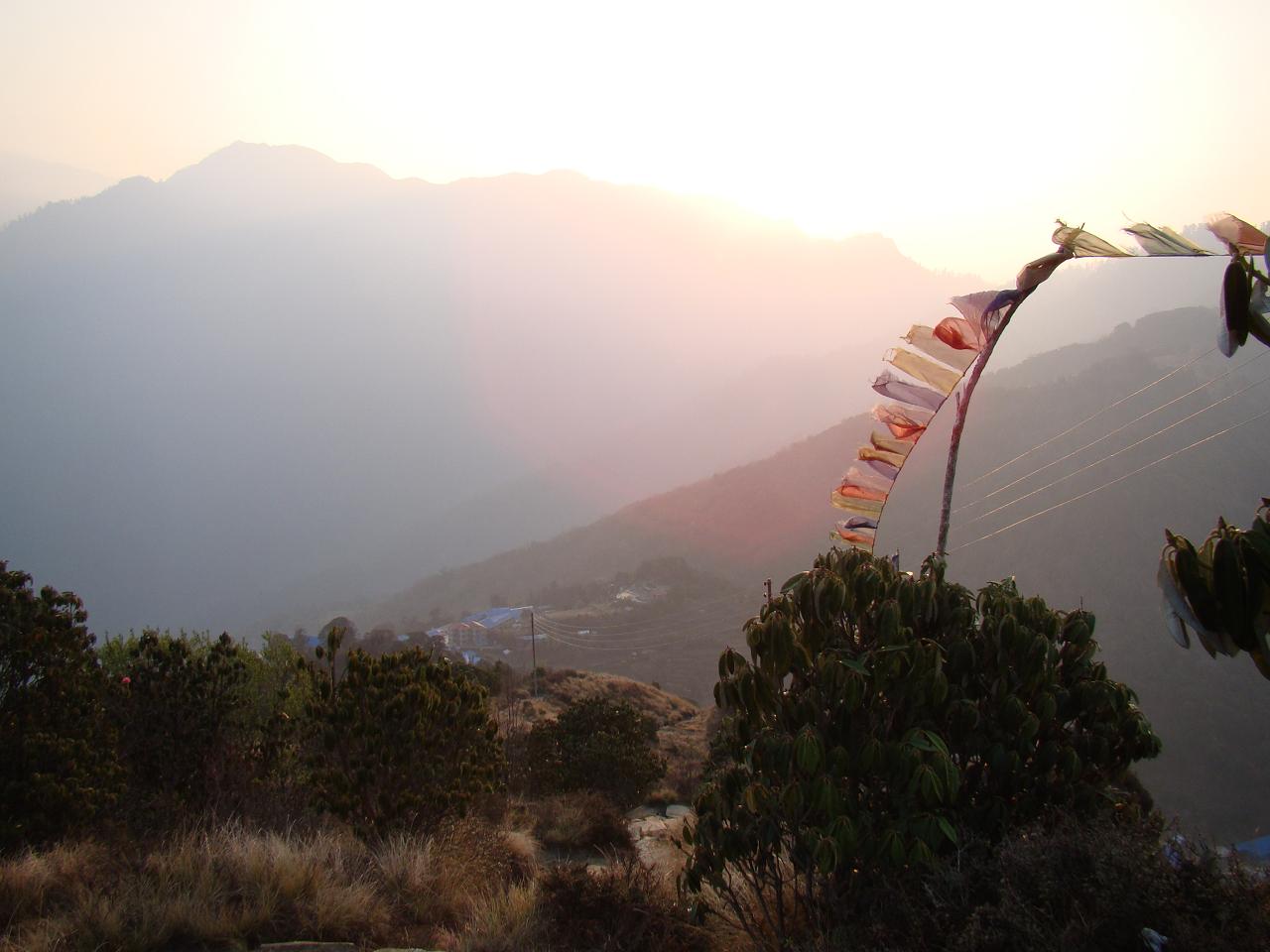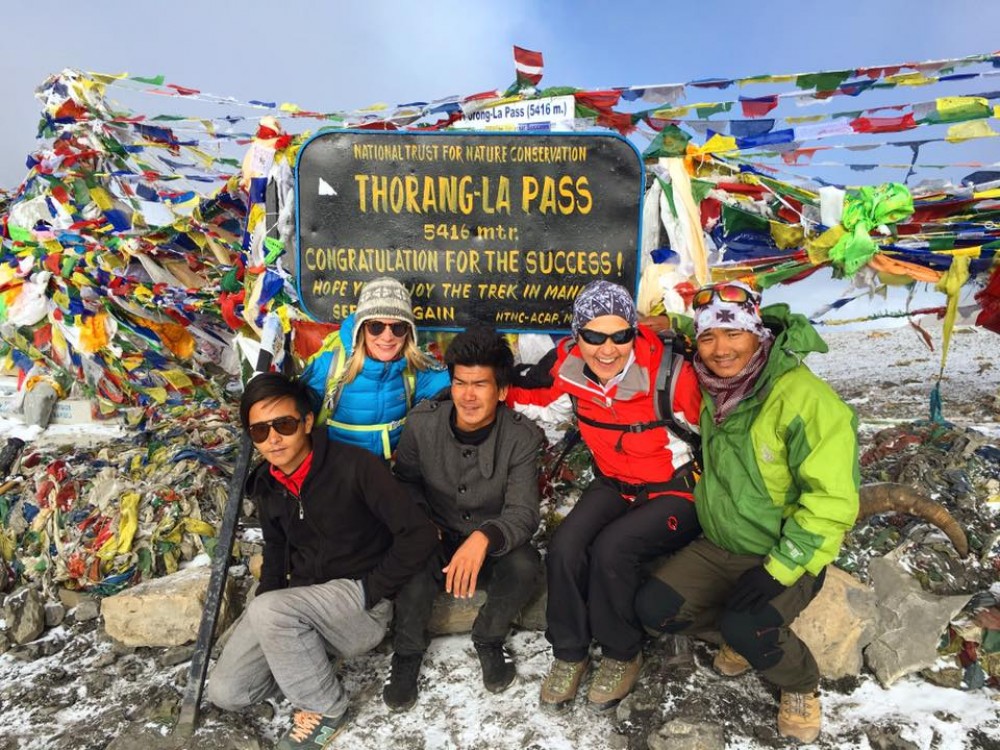Post Views: 25
Trekking to the Khan Tengri BC. Fixed departure dates
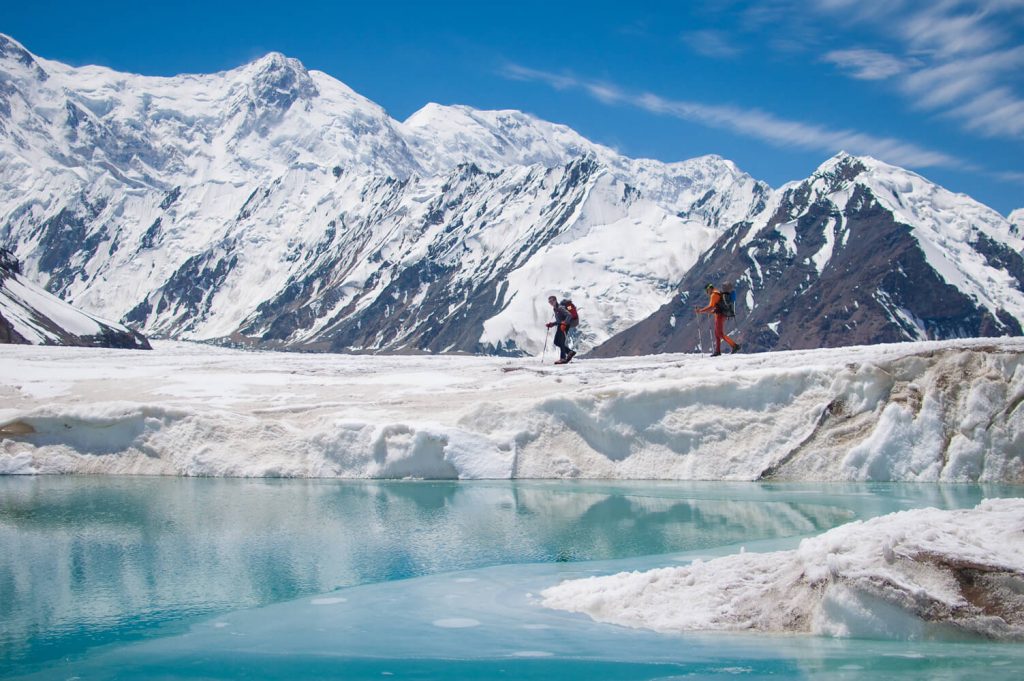
Trip features: Trek. Visits to Base Camps Southern Inilchek and Karkara, high altitude trekking camps (2800 m. – 4000 m. a.s.l.).
Duration of the 1 program with fixed date: from 10 July to 23 July 2023.
Duration of the 2 program with fixed date: from 28 July to 10 August 2023.
Duration of the 3 program with fixed date: from 7 August to 20 August 2023.
The trek from «At-Jailoo» 2500m to BC «South Inylchek» 4100m. Russian >>>
Contact Us:
Telegram – https://t.me/ClimberCA
WhatsApp / Viber +7966 065-53-44
e-mail – your@climberca.com
The trip we offer below is a trekking tour along the mountain trails in Tien Shan. It begins in Bishkek, the capital of Kyrgyzstan. Then you are transferred to At Jailoo alpine meadow. From here the trekking starts. You will see the real beauty of these mountains, the serenity and silence of Tien Shan, the “Celestial Mountains”, you will trek along one of the biggest glaciers in the world, and hike close to the mysterious Merzbacher Lake. Your trip finishes at “South Inylchek”, a base camp located at the foot of the magnificent peak Khan Tengri (7010 m.) This season we continue setting up stationary tent camps along the whole route. Travel with comfort! If you book the trek “To The Heart Of Tien-Shan”, you will enjoy all the facilities and commodities of our fixed camps all the way along the trek! It also gives you a number of advantages.
If you use our service, your acclimatization will be much easier as:
1) You will be awaited in every Camp, you will be accommodated in comfortable tents and get delicious meals that include National and European cuisine;
2) You will have communication in every Camp, and will be able to send the information from there;
3) Your itinerary will be marked and described in details in a leaflet, that you will get when your use our service.
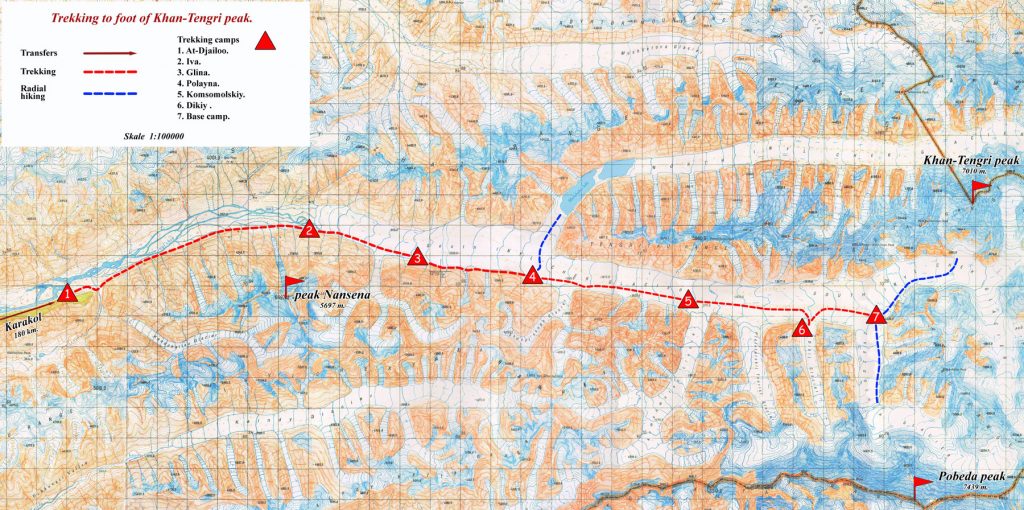
If you use our service, you can save money, as:
1) There is no need for you to bring (or rent) lots of things – like tent, dishes, frying pans, etc;
2) You don’t need to buy any food;
3) No need to hire porters.
The trek program:
Day 1. “Manas” international airport – Bishkek – Karakol.
Drive: 400 km. / 7-8 hrs. / + 900 m. Arrival in Bishkek early in the morning.
Meeting at the airport and transfer to Bishkek, check in to hotel. After short rest and late breakfast transfer to town of Karakol. Lunch on the way. On arrival to Karakol check in to hotel. Dinner and overnight in hotel (1700 m. a.s.l.).
Day 2. Karakol sightseeing tour. Karakol – At-Jailoo Base Camp.
Drive: 200 km. / 5-6 hrs. / + 800 m. After breakfast short sightseeing tour around Karakol. Visiting Dungan mosque, a unique construction in Chinese style, but serving as a mosque. Also you will see an Old Russian Orthodox Cathedral made of wood without any nails. Lunch in local café. Transfer to At-Jailoo base camp. 200 km drive will take us about 6 hours. The road passes through a number of villages, then continues up along the canyon Turguen Ak Suu towards Ashuu Chon Pass (3808m). Descent to Ashuu Tor valley. On the way we pass by Koilu and Sary Jaz rivers. Later we drive along Sary Jaz river to the check point Maida-Adyr as we are going to enter the border zone, we must leave our permits here. About 1-1.5 hours drive along Inylchek river, arrival in At Jailoo camp. Sary Jaz river is one of the largest in Kyrgyzstan. The river has a length of 200 km and carries its water into Inylchek river which flows to China. Dinner and overnight in tents (2500 m. a.s.l.).
Day 3. At Jailoo Camp – Iva Camp.
Trek: 18 km. / 5-7 hrs. / + 400 m. Trekking from At-Jailoo along Inylchek River to the beginning of Inylchek glacier. After breakfast we take lunch boxes and will leave the camp in order to be able to cross At Jailoo river before 9 am while there is still little water and the water level is low. We cross its freezing cold water, but it gets more difficult the later we do it. Within an hour we reach a place called Prijim. If the water level allows, we walk and easily cross another stream here. Otherwise we have to ascent and descend a steep and overgrown path which takes us about an hour extra. All depends on the lake Merzbacher. Whether it is the time when the lake opens and its water rushes down, or it has already or vice versa not opened yet, then we are lucky! Still it is highly recommended to bring along the sandals which you can wear when crossing the river and streams. Dinner and overnight in tents (2900 m. a.s.l.).
Day 4. Iva Camp – Glina camp.
Trek: 8 km. / 5-6 h. / +200 m. The Inylchek Glacier is the largest glacier and centerpiece of the Central Tien Shan. Extending 62 km in length with a width of over 3 km, the Inylchek Glacier is the third longest glacier outside the Polar Regions. It is estimated that the glacier holds enough ice to cover the entire country of Kyrgyzstan in three meters of melt water (Stewart, 2002). The first outside to travel into the area and visit the glacier was the European Pyotr Semenov in 1857. Climbing in the area began in the early 1900’s and continued through the 1930’s. Under Soviet rule, the permitting system restricted foreign access. It was not until after the collapse of the Soviet Union in 1991 that foreign climbers began to climb in the area (Stewart, 2002). Breakfast. We take our lunch boxes and leave at about 9 am. Very steep ascents and descents take exhaust. We will try to go through to the right slope of the terrace. The trail crosses the terrace, later small rivers, washes out mountain slope, Putevodnyi glacier. We go up and down, up and down all the time. Lunch on the glacier at about 1 pm. Then we ascent another steep terrace along a narrow trail. The variety of terrains and the steepness of the slope trails will add some more adrenaline in blood. Arriving in Glina Camp we will have some tea or coffee and rest. The camp has got its name (which means “clay” in Russian) because of its location on a green clay field. Dinner at 6 pm. Overnight in tents (3100 m. a.s.l.).
Day 5. Camp Glina – Merzbacher Glade.
Trek: 9 km. / 5-6 h. / +300 m. Breakfast at 9 am. Again we trek up and down various terraces though have also about 10 km of straight path. Only once we trek across a small glacier, passing a river and have lunch on the shore of a small lake, swim and rest. It will be an hour left to get to the Camp. Upon arrival we have some tea or coffee, then dinner at 6 pm. Wonderful views of Merzbacher lake open to us from the Camp. Merzbacher glade is the last grassy place in the area located just across the unique Merzbacher Lake. There is a scientific research station on the glacier. Scientists from all over the world come working here every summer. They study glaciers moving, meteorological situation of the region and the lake Merzbacher itself. There is a large green area around which is flat enough for camping. Overnight in tents (3400 m. a.s.l.).
Day 6. Merzbacher Lake.
Trek: 10 km. / 4-5 h. Breakfast at 9 am. We take our lunch boxes and leave at 10 am. Across South Inylchek glacier up to Mertzbacher Lake. The glacier terrain is ice covered with rocks and stones, sand and mud. The trekking time both ways is 4-5 hours. Sandwiched between the Northern and Southern branches of the glacier lies the mysterious Merzbacher Lake, which form every summer and then, sometime in August, burst through the ice banks and the waters flow into the Inylchek River. (Actually, the timing varies – for example in 2012 it happened on 10,July.) In reality, only part of the lake drains – the lake, which is 6 kilometres long and one kilometre wide, is in fact divided into two by a bridge of ice and whilst the lower half empties regularly, the upper part is always full of water. Also, the lakes empty twice a year – once in the summer and once in the winter – but most people only know about the summer event. In 1903 the German geographer and mountaineer, Gottfried Merzbacher, first discovered the lake while leading an expedition into the Tian Shan Mountains aiming to reach the summit of Khan Tengri. Forced back by ice, from their originally intended route through the Byankol Pass and along the Semyenov and Mushketov glaciers, they attempted a different approach – along the Enilchek glacier. Once again they failed, but they had shown that Khan Tengri was in fact on a ridge and not in the centre of that particular knot of the Tian Shan Mountains as had been thought. The expedition will be better remembered, however, for the discovery of the mysterious lake that now bears Merzbacher’s name. Overnight in tents (3400 m. a.s.l.).
Day 7. Merzbacher Glade – Komsomolskiy Glacier.
Trek: 12 km. / 4-6 h. / +400 m. Breakfast at 8 am. We take our lunch boxes and set off at 9 am. It is a long day of trekking surrounded with beautiful landscapes – snow, rocks and multi-colored ice – black, white and sometimes even striped. The first part of our trek goes along the right side over terraces and, right before we reach Shokalskyi glacier it smoothly goes down. The trail reaches the glacier and the black moraine which flows out of Komsomolez glacier. We follow it up to the glacier itself. The terrain is very diverse: rivers, crevices, ascents and descents, the hikes around those take much time and energy. It will be our first night at the glacier. Strong wind usually starts here after 4 pm. It might be much colder than before. Hot drinks are very helpful here, the dinner is as usual at 6 pm. Overnight in tents (3800 m. a.s.l.).
Day 8. Komsomolskiy Glacier – Dikiy Glacier. Trek: 7 km. / 3-5 h. / +100 m. Breakfast at 8 am. Departure at 9 am Lunch boxes. Trekking in this part of Tien Shan is absolutely fabulous. The distinctive characteristic of the region is a great number of nameless peaks, unclimbed yet, about 5000m above sea level high. Straight from the camp we cross Proletarsky glacier moraine, get to the middle of Dikyi glacier moraine and walk along it up to the Dykyi glacier. The first part of the way is uneven, we walk up and down. Closer to the glacier the moraine becomes more even, without so many crevices, creeks and, no needs of working around to escape crossing small streams. Lunch break. In front of Proletarsky glacier we go up straight. Dikyi camp is located behind Pesnya Abaya peak (in 30 minutes). From Dikyi camp you have beautiful view of Khan Tengri, Pobeda, Gorky, Chapaev, Trehglavaya peaks. Tea, coffee and dinner at 6 pm. Overnight in tents (3900 m. a.s.l.).
Day 9. Dikiy glacier – South Inylchek base camp.
Trek: 8 km. / 4-6 h. / +200 m. Optionally: Climbing to Pesnya Abaya – 4901 a.s.l. Breakfast at 8 or 9 am. Short trek,so we can depart at 10 am. We take our lunch boxes. We cross the whole glacier till the central moraine where the base camp is situated. The path is covered with rocks, ice, creeks, lakes and cracks. But it is possible to do without any ropes and crampons. We arrive in the base camp (4000m) at about 2 pm. We have our lunch, tea or coffee. Dinner at 7 pm. INYLCHEK Base Camp is ideally situated in the heart of North Tien-Shan at the South Inylchek glacier approximately at 4000 m. above the sea level. It has a picturesque view of Khan-Tengri ( 7010 m .) and Pobeda ( 7439 m .) peaks. Overnight in BC in tents (4100 m. a.s.l.).
Day 10. South Inylchek base camp.Rest day at South Inylchek BC or radial hiking to Khan-Tengri. “South Inylchek” BC is open from 3 of July till 30 of August every year and might be interesting not only for alpinists, but also for usual travelers, who would like to enjoy the views of beautiful mountains on the flight by helicopter. The beautiful pyramid of Khan Tengri is without doubt the Jewel of the Tien Shan. It is the second highest mountain in this most northerly and remote of the great Asian mountain ranges. Among the local people, the white peaks are known as ‘The Mountains of Heaven’. Khan Tengri peak was first climbed by a Soviet expedition in 1931, via the West Col and West Ridge. Since then, most of its ridges and faces have been climbed – all by Soviet teams. Overnight in tents.
Day 11. Helicopter flight to Karkara helicopter pad – Issyk Kul Lake. Drive: 200 km. / 3 h. / -2500 m.Breakfast. Helicopter flight from BC to Karkara helicopter pad. Transfer to Issyk-Kul Lake. In the afternoon three hour drive to the Issyk-Kul Lake, lunch on the way. Issyk-Kul is the second largest alpine lake in the world after Lake Titicaca in South America. Measuring 182 km long by 58 km wide, the lake appeared as a result of volcanic activity. It is heated from below by thermal activity and never freezes even in the depths of winter. In the summer the water temperature reaches 25-28 degrees centigrade (warmer than the air) and you can swim in the lake enclosed on all sides by the snowy peaks of the Tien Shan Mountains. Extremely deep and nicely warm over the centuries the lake has been something of an oasis in this inhospitable mountain environment. With diverse flora and fauna Issyk-Kul Lake and the surrounding environments are rightly considered to be one of Central Asia most remarkable locations. Arrival to the hotel. Overnight and dinner in hotel.
Day 12. Issyk- Kul – Bishkek.
Drive: 250 km. / 5-6 h. / -800 m. Breakfast. Time at leisure. Lunch. In the afternoon transfer to Bishkek through tight Boom Gorge where boisterous Chu River, so much loved by rafters (routes up to 6th category difficulty!), cuts its way. On the way visit Burana Tower (old minaret) near Tokmok town. That minaret was constructed in Balasagyn town; one of the capitals of Karakhanid State existed in 11-12 centuries AD. Explore ruins of that important trading point at the Great Silk Road and visit a little local museum telling about that civilization. Also watch a collection of Balbals, Turkic ancient tombs. Arrival to Bishkek. Accommodation in hotel.
Day 13. Sightseeing tour in Bishkek. After breakfast a short sightseeing tour in the city. The capital and industrial centre of Kyrgyzstan, Bishkek is a city of wide avenues, handsome buildings and Soviet heritage. It is the permanently snow capped Kyrgyz Alatau mountain range which towers over Bishkek providing a quite stunning backdrop. Visit Manas Monument, the main national hero of the Kyrgyz people. Then excursion to the State History Museum and walking tour around main Ala Too Square to watch ceremony of changing of the Guard of Honor, Independence Monument, and finish at the Old Square with Government House. Transfer to the Victory Square to finish the city tour by short excursion there. After excursion tourists may go shopping in the largest department store in the city – ZUM and a colorful oriental bazaar. Farewell dinner in restaurant. Overnight is in hotel
Day 14. Flight back home. Drive: 40 km. / 1 h. Early in the morning transfer to the airport. Departure back home.
End of our service.
The price includes:
The price of program in 2023: 2540 USD per person.
SGL supplement in hotels: 130 USD per person.
SGL supplement in tents: 110 USD per person.
Supplement for climbing to Pesnya Abaya Peak: 55 USD / per person, incl. mountain guide service, and rent of rope, crampons, harness (for group of 5 pax and more price is 40 USD / pax)
The price included:
– accommodation in Bishkek in Asia Mountains hotel or similar – 3 nights
– accommodation in Issyk-Kul Lake – 1 night
– accommodation in Karakol town Amir or in Green Yard Guest House – 1 night
– accommodation and full board (hot food for breakfast and dinner, lunches as snack boxes) in the permanent tent camps along the trek At Jailoo – Base Camp “South Inylchek”
– 9 nights
– helicopter flight Base Camp “South Inylchek”- Base Camp “Karkara”
– all transfers as per program – FB during whole program
– frontier zone permit
– mountain guide service
– porter service – not more than 12 kg per person (see below)
– all ecological and entrance fees as per program
The cost doesn’t include:
– visa support and visa fee (if necessary)
– all optional deviations from the main itinerary
– beverages and meals not included in main menu
– personal expenses (extra luggage, room service, medical expenses/insurance, etc)
Your baggage on trek will be carried by porters. The packed weight of your trek bag whilst trekking should be no more than 12 kg of personal belongings. 1kg extra – 12 USD per programs. It is possible to leave travel clothes or other items not required on trek in our office – we will deliver them to Issyk-Kul Hotel on your arrival there after BC.
Menu
Always on the tables: honey, jam, sugar, condensed milk, dried fruits, cookies or sweets, salt, pepper, ketchup.
Breakfast:
Each breakfast consists of porridge and additional dish.
Additional dish: omelet with bacon, omelet with cheese, fried sausages, pancakes, cheesecakes, scrambled eggs with sausage, boiled eggs.
Dinner:
Each supper consists of salad, soup, main dish and dessert.
Salads: funchoza(starch noodles), rice with crab sticks, eggs with fish, cabbage with carrot, greek salad, beans with onion, cod-liver with eggs.
Soups: minestrone, kesme, lentil puree soup, rice soup, pumpkin puree soup, fish soup and soup with dumplings.
Main dish: kuurdak, pilaf, stew with spaghetti and cheese, dymlyama, stuffed pepper, lagman, befstroganof with rice.
Dessert: cakes, waffles, fruits and rolls.
Lunch-box:
Buffet will be served after breakfast, where participants will be able to choose the products for lunch-box: bread, tortillas, different types of sausage, cheese and pate, canned goods, boiled eggs, vegetables, fruits, dried fruits, as well as biscuit and chocolate bar, juice, sparkling or still water.
For this trip you will need the following:
– 4 season sleeping bag
– walking boots
– waterproof jacket and trousers
– fleece jacket or similar
– warm hat and gloves
– sunglasses
– a daypack of around 40 liters
– head-torch and batteries
– 2 x 1 liter water bottles
– sun cream.
A down jacket, pair of sandals and walking sticks are recommended.


